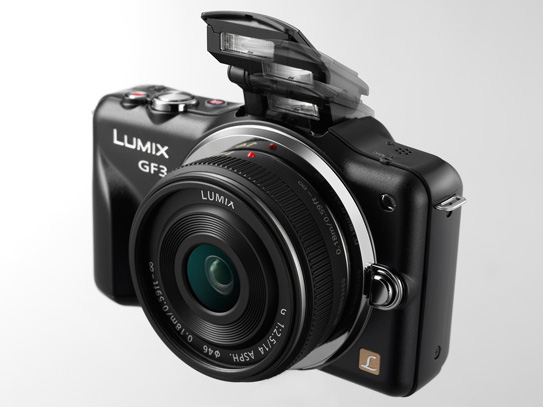Panasonic: APS-C lifespan is limited
More room for improvement with Micro Four Thirds

Panasonic, which manufactures compact system cameras using a Micro Four Thirds sensor, has said that there is still a lot of room for improvement in the technology, while rival companies using an APS-C size sensor are working with established technology that will be harder to improve.
Barney Sykes from Panasonic UK told TechRadar, "One of the benefits we have is that Four Thirds was built from the ground up as a digital format. We can improve the sensor a lot – there's still room for that improvement.
"APS-C sensors aren't "old" sensors as such, but they've been around a long time. While improvements are probably still coming, there's got to be a lifespan – it's a question of how far you can improve the sensor."
Panasonic introduced the first compact system camera back in 2008, with the Panasonic G1. Olympus, which also uses the Micro Four Thirds format joined the market in 2009 with the introduction of the Olympus PEN E-P1.
Rivals
Since then, a number of manufacturers have chosen to enter the market, with Sony, Samsung, Fuji and Pentax (K-01) using the APS-C size. Nikon has chosen to use a smaller sensor for its CSC, the Nikon 1 system, while Pentax also uses a small sensor in its Q camera.
Companies using APS-C size sensors have long eschewed the low light advantages of using a bigger sensor, although it does inevitably mean that cameras need to be larger to fit the sensor in.
Sykes acknowledges that there's still work to do be done with Micro Four Thirds: "A lot of people talk about higher ISO. Bigger sensors open up higher ISO shooting, that's very important and we will look to improve our performance."
Sign up for breaking news, reviews, opinion, top tech deals, and more.
Quality
Sykes continues: "I think what's missing at the moment is edge to edge sharpness. If you look at some of the images from an APS-C sized sensor, you can see quite clearly the edge to edge sharpness is just not as good as from Micro Four Thirds."
Panasonic now has a range of cameras that comprises four different system, with the most recent introduction being the high-end Panasonic GX1 camera.
There has been an explosion in more advanced CSCs entering the market, with the Fujifilm X Pro1, Sony NEX-7 and fellow Micro Four Thirds users, Olympus introducing the OM-D.
"The balance of the system has got to be very, very important," concluded Sykes. "A lot of people are using a very big round hole, with a big square peg - and it's not necessarily fitting."

Amy has been writing about cameras, photography and associated tech since 2009. Amy was once part of the photography testing team for Future Publishing working across TechRadar, Digital Camera, PhotoPlus, N Photo and Photography Week. For her photography, she has won awards and has been exhibited. She often partakes in unusual projects - including one intense year where she used a different camera every single day. Amy is currently the Features Editor at Amateur Photographer magazine, and in her increasingly little spare time works across a number of high-profile publications including Wired, Stuff, Digital Camera World, Expert Reviews, and just a little off-tangent, PetsRadar.